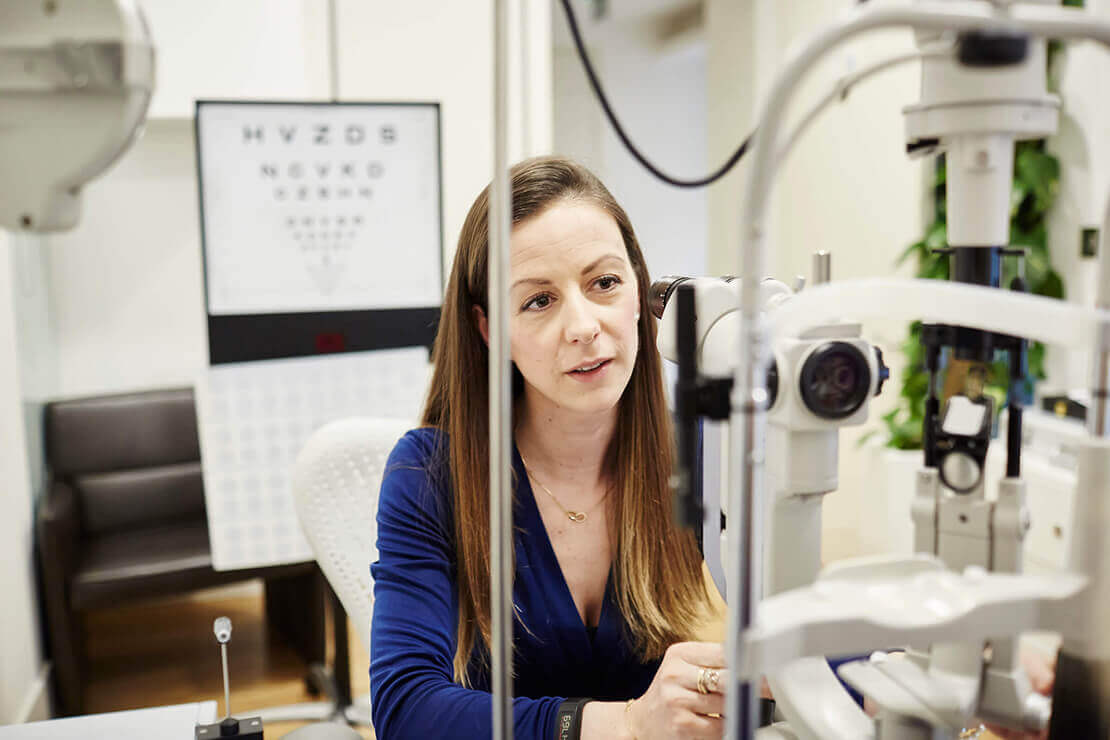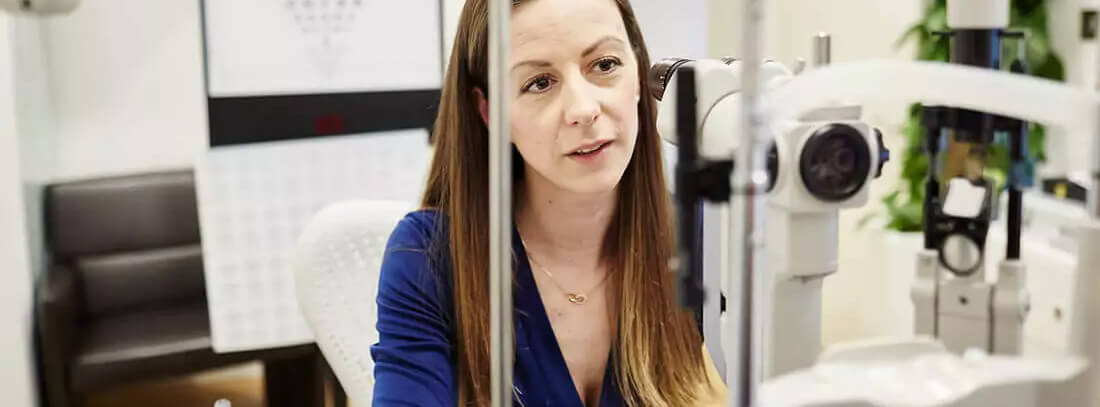Despite being the most commonly performed elective procedure worldwide, common misconceptions persist about Laser Eye Surgery. These misconceptions include:
Complications are common and serious
Laser Eye Surgery is generally considered an extremely safe procedure.
All kinds of surgical procedures come with a certain amount of risk involved – and Laser Eye Surgery is no exception. Nonetheless, in the hands of an expert surgeon using the latest technology, the risk of any compromise to vision is exceedingly small (around 0.1%).
This risk may be slightly higher for patients with higher prescriptions. If this applies to you, your chosen clinic will inform you of this at your consultation appointment.
Laser Eye Surgery is painful
Many people are apprehensive about having Laser Eye Surgery over fears that the procedure will be painful. The good news is that the procedure itself is quick and pain-free.
Patients will be administered anaesthetic eye drops to numb the treatment area during the procedure. While you may experience some pressure in the eye, this is generally not painful.
It is also normal to experience some discomfort during the early stage of your recovery; however, this is generally managed with painkillers and lubricating eye drops – both of which should be provided by your clinic.
Patients who have surface procedures such as PRK/LASEK may experience discomfort for longer than those who have LASIK or ReLEx SMILE. Nonetheless, this discomfort is generally easily managed.
Laser Eye Surgery can only correct short-sightedness
While the earliest Laser Eye Surgery procedures were used to correct myopia (short-sightedness), today it can be used to treat a full range of refractive errors, including hyperopia (long-sightedness), astigmatism, and even presbyopia.
Developments in Laser Eye Surgery technology also mean we can often treat even very high prescriptions.
Laser Eye Surgery cannot treat patients who need reading glasses
At London Vision Clinic, we have been offering treatment for presbyopia for over a decade – and we even helped to develop it!
PRESBYOND® Laser Blended Vision was introduced at the London Vision Clinic in 2011. This innovative technique involves correcting each eye differently, creating a “blend zone” in your vision. Your brain is able to combine the images from each eye to provide clear vision across all distances.
Compared to other methods of presbyopia correction, such as monovision, PRESBYOND® Laser Blended Vision is well-tolerated: Around 97% of patients are suitable for the treatment, compared to just 60% who can tolerate monovision correction.
Laser Eye Surgery results are not permanent
Laser Eye Surgery changes the shape of the eye by removing corneal tissue. These changes are permanent.
Long-term follow-up studies are beginning to show that the changes made to your cornea during Laser Eye Surgery are permanent and do not significantly regress. However, our eyes are subject to natural changes as we get older.
In many cases, these changes are very minor and may not require further correction. Studies show that once we reach the age of 50, our prescription changes by an average of half a dioptre every decade. As such, while the changes made in Laser Eye Surgery are permanent, the procedure cannot prevent the progression of presbyopia.
You can be too old for Laser Eye Surgery
There is technically no upper age limit for Laser Eye Surgery, so long as the eyes and the patient are healthy.
For patients over 18, your suitability for Laser Eye Surgery will never be determined by your age alone. Patients of all ages with a treatable prescription and good eye and general health can be considered for treatment.
Laser Eye Surgery can cause blindness
While it is technically possible to go blind as a result of Laser Eye Surgery, the risk is exceedingly small – almost too small to measure. For example, in the hands of an expert surgeon using the latest technology and techniques, the chances of blindness are probably around one in five million.
You could end up with worse vision than you started with.
To address this query, we have to consider both your vision with and without glasses prior to treatment.
- Your vision without glasses – uncorrected vision loss: There is virtually no chance that your vision after Laser Eye Surgery will be worse than it was without glasses or contact lenses before your treatment.
- Your vision with glasses – loss of corrected distance visual acuity: Your maximum clarity with glasses before surgery is known as your ‘corrected distance visual acuity’ (CDVA). In expert hands, the chance of your CDVA being reduced by even a small amount is around 1 in 1,000 (0.1%) per eye for the majority of patients. There may be a slightly higher risk for patients with higher prescriptions. If this applies to you, this will be indicated at your initial screening appointment.

